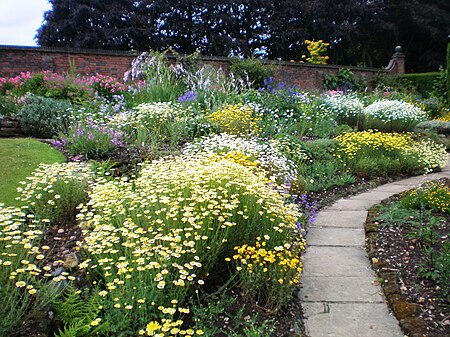Winterbourne Botanic Garden

Winterbourne Botanic Garden is a heritage site and botanic garden in Edgbaston, Birmingham, England. It is owned by the University of Birmingham. The house was built as a family home for the Nettlefold family in 1904. The 7 acres (28,000 m2) garden is a rare surviving example of an early 20th-century high status suburban "villa" garden, inspired by the Arts and Crafts movement. The house and garden are open to the public all year round. The house features rooms displayed in Edwardian style, and temporary exhibitions. The site also has a tea room, gift shop, second-hand bookshop and printing press. Winterbourne offers a regular programme of craft and print workshops, talks and events. The Winterbourne Centre for Horticulture offers RHS accredited courses and supports horticultural traineeships. Winterbourne is open daily for a small charge, with hours varying between summer and winter. Staff and students at the University of Birmingham are entitled to free entry. It is a member of the Historic Houses Association and Royal Horticultural Society Partner Garden.
Excerpt from the Wikipedia article Winterbourne Botanic Garden (License: CC BY-SA 3.0, Authors, Images).Winterbourne Botanic Garden
Edgbaston Park Road, Birmingham Edgbaston
Geographical coordinates (GPS) Address External links Nearby Places Show on map
Geographical coordinates (GPS)
| Latitude | Longitude |
|---|---|
| N 52.4528 ° | E -1.9242 ° |
Address
Winterbourne Botanic Gardens
Edgbaston Park Road
B15 2RB Birmingham, Edgbaston
England, United Kingdom
Open on Google Maps









